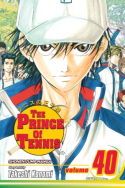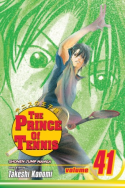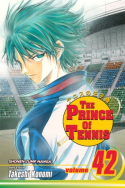 Reading Pandora Hearts is like mentally treading water. There is so much going on that one is constantly churning the plot waters, trying to stay afloat. It’s not that I’m saying this is a bad thing or that I object to thinking—far from it!—but that I never appreciated episodic lulls so much as when they weren’t around to give me a chance to understand and process what just happened.
Reading Pandora Hearts is like mentally treading water. There is so much going on that one is constantly churning the plot waters, trying to stay afloat. It’s not that I’m saying this is a bad thing or that I object to thinking—far from it!—but that I never appreciated episodic lulls so much as when they weren’t around to give me a chance to understand and process what just happened.
The first volume introduced readers to fifteen-year-old Oz Vessalius, who is banished to a mysterious dimension known as “the Abyss” during his coming-of-age ceremony. He escapes by entering into a contract with a “chain” (denizen of the Abyss) named Alice, who wants to search for her scattered memories in the real world. When they arrive, ten years have passed and they are welcomed by a strange trio, one of whom (Raven) bears a striking resemblance to Oz’s childhood friend, Gilbert.
 The search for Alice’s memories begins in the second volume, with strong hints that the answer Oz seeks—what was the “sin” that led to his banishment?—lies within them. Oz and Alice have agreed to help an organization known as Pandora (which has several goals regarding investigating and gaining control over the Abyss) and have been assigned by one of its employees, the eccentric Xerxes Break, to take down an illegal contractor whose chain is devouring humans.
The search for Alice’s memories begins in the second volume, with strong hints that the answer Oz seeks—what was the “sin” that led to his banishment?—lies within them. Oz and Alice have agreed to help an organization known as Pandora (which has several goals regarding investigating and gaining control over the Abyss) and have been assigned by one of its employees, the eccentric Xerxes Break, to take down an illegal contractor whose chain is devouring humans.
Now, at this point, I was thinking, “Okay, here’s our episodic gimmick. Oz and Alice deal with the dangerous contractors and collect memories and it’ll be a sort of basic shounen fantasy.” But that’s actually not how it turns out. Any time Xerxes arranges some sort of encounter with a contractor or chain, it always leads to major plot developments. Sometimes this involves answering some questions—the identity of the braided man we keep seeing in Alice’s memories, for example—but just as often generates several more. I considered keeping a scorecard of questions raised and questions answered so that I could keep track of what issues were still outstanding.
 Mangaka Jun Mochizuki also skillfully employs flashbacks to flesh out our understanding of Oz, who is far more complex (and clever and resilient) than he initially appears. His affinity for and faith in Alice, for example, persists despite various people advising him not to trust her, and we gradually learn that this is because he sees a lot of himself in her. Both he and Alice have cause to question why they exist, and since he, as a child, was afraid to pursue the truth regarding his father’s animosity towards him, he admires that Alice is fearlessly pursuing the recovery of her memories. Too, Oz displays an almost alarming equanimity about his situation, which can again be traced back to his father’s coldness, when Oz learned to “accept everything as it is.”
Mangaka Jun Mochizuki also skillfully employs flashbacks to flesh out our understanding of Oz, who is far more complex (and clever and resilient) than he initially appears. His affinity for and faith in Alice, for example, persists despite various people advising him not to trust her, and we gradually learn that this is because he sees a lot of himself in her. Both he and Alice have cause to question why they exist, and since he, as a child, was afraid to pursue the truth regarding his father’s animosity towards him, he admires that Alice is fearlessly pursuing the recovery of her memories. Too, Oz displays an almost alarming equanimity about his situation, which can again be traced back to his father’s coldness, when Oz learned to “accept everything as it is.”
The end result is a story that combines a non-stop spooling out of multi-layered plot threads with some genuinely affecting character work. I particularly appreciate that the female leads—Alice and Sharon, a Pandora employee—are not the character types they initially seem to be (tsundere and meek girl, respectively) and just about any scene wherein Alice feels left out at the signs of affection between Oz and others or just vulnerable in general is a big favorite of mine.
Another aspect of Pandora Hearts that I must commend is the artwork, which, as MJ amply illustrated in a Fanservice Friday post on Manga Bookshelf, is definitely fujoshi-friendly. Consider the evidence:
Shallow confession: although I really like Raven for himself, I admit that I also enjoy just looking at him. It’s not all pretty fellows, though, as Mochizuki’s renderings of the Abyss are creepy and imaginative, and the inhabitants even more so. There are a few references to Alice in Wonderland scattered throughout, too, but it’s nothing that even comes close to dominating the story or its landscape.
As of the fifth volume, Pandora officials have vowed to protect Oz, who is destined to play a major role in their conflict with the Baskervilles, remnants of a clan that battled the four great families (who eventually formed Pandora) 100 years ago and sacrificed the capital city as an offering to the entity in control of the Abyss (not to mention being responsible for sending Oz there in the first place). Plus, Sharon has been abducted and someone just may be in league with the enemy. Many other questions—about both past and future—abound, which ensure that I will keep reading (and hoping everything is ultimately resolved) to the very end.
I hope I haven’t given the impression that Pandora Hearts is a slog, because it truly isn’t. It’s engaging, intriguing, and sometimes even funny. What it never is is tranquil or relaxing, so be sure to save it for a time when your brain needs a little exercise.
Review copies for volumes three through five provided by the publisher.
































Recent Comments